As you get behind the wheel of your Ford S-MAX, you’re surrounded by a dashboard filled with warning lights that are designed to keep you informed and safe on the road. But have you ever wondered what each of those lights really means?
From the ABS light to the blind spot monitoring indicator, it’s essential to understand what’s being communicated to you in those critical moments.

As you begin to examine the various warning lights, you’ll start to uncover the importance of staying on top of your vehicle’s systems and performance – but where do you even start?
Quick Navigation
Dashboard Warning Lights Overview
Understanding Your Dashboard
The Ford S-MAX dashboard features a range of warning lights that vary in design and location depending on the model. The layout is specifically designed to provide essential information about your vehicle’s systems and performance.
Strategic Placement of Warning Lights
- Purpose: Ensures vital alerts grab your attention quickly.
- Examples:
- Anti-lock Braking System (ABS) warnings.
- Start-stop system indicators.
- Battery status alerts.
- Blind Spot Monitoring notifications.
Importance of Familiarization
- Quick Identification: Knowing the location and purpose of each warning light allows you to respond promptly.
- Enhanced Safety: Timely action reduces risks and ensures efficient vehicle operation.
Ensuring a Smooth Journey
Take time to familiarize yourself with your Ford S-MAX dashboard layout. This knowledge will help you identify and address alerts efficiently, ensuring a safer and more enjoyable driving experience.
Safety and Performance Alerts
Purpose of Dashboard Alerts
The Ford S-MAX dashboard features strategically placed safety and performance alerts to ensure you remain informed about critical systems and potential issues during your drive.
Performance Indicators as a Safety Net
These indicators provide real-time updates on your vehicle’s condition, offering a crucial layer of safety and reliability in case of emergencies.
Key Alerts
Brake Warning Light
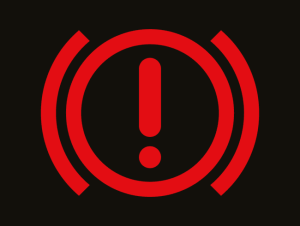
- Meaning:
- Illuminates when the parking brake is applied.
- May signal a fault in the brake system, such as low brake fluid or worn brake pads.
- Action: Check the parking brake and inspect the brake system promptly.
Diesel Exhaust Fluid (AdBlue) Warning Light
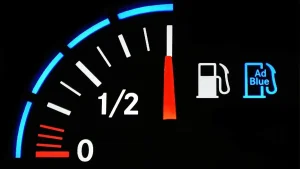
- Meaning:
- Indicates low diesel exhaust fluid levels.
- May signal a fault within the exhaust fluid system.
- Action: Refill AdBlue fluid and consult a technician if the issue persists.
Importance of Prompt Response
Understanding and addressing these alerts ensures:
- Safety: Maintains the reliability of critical systems.
- Performance: Prevents further damage and ensures efficient operation.
By staying attentive to these safety and performance alerts, you can drive with confidence, knowing your Ford S-MAX is operating as intended.
Engine and Emissions Issues
Importance of Engine and Emissions Systems
The engine and emissions systems in your Ford S-MAX are vital for ensuring a smooth, efficient, and environmentally friendly driving experience.
Key Warning Lights
Engine Warning Light

- Meaning: Indicates a fault in the vehicle emission control system.
- Possible Causes:
- Exhaust system faults.
- Issues with emission controls.
- Action: Address the issue promptly to prevent damage to your vehicle or environmental harm.
Powertrain Warning Light
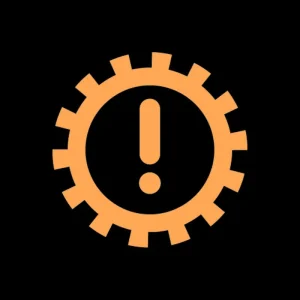
- Meaning: Signals a fault in the engine, transmission, or drivetrain.
- Action: If you’re unsure of the cause, consult the owner’s manual or seek professional assistance to diagnose and resolve the issue.
Importance of Prompt Action
- Prevent Further Damage: Early intervention minimizes repair costs and prevents system degradation.
- Maintain Efficiency: Ensures the vehicle continues to operate at optimal performance levels.
- Environmental Compliance: Addresses emissions-related issues to reduce environmental impact.
By staying alert to these warnings and acting quickly, you ensure the reliability, efficiency, and eco-friendliness of your Ford S-MAX.
Advanced Safety Features Alerts
Purpose of Advanced Safety Features
The advanced safety features in your Ford S-MAX are designed to enhance protection by alerting you to potential hazards and helping prevent accidents.
Key Features and Alerts
Lane Departure Warning

- Function: Notifies you when your vehicle drifts out of its lane without signaling.
- Benefit: Encourages lane discipline and reduces the risk of side-swipe collisions.
Automatic Emergency Braking
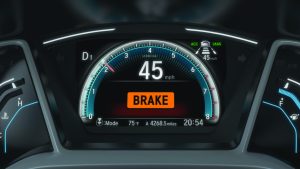
- Function: Applies the brakes in emergency situations to prevent or mitigate collisions.
- Benefit: Enhances reaction time, especially in sudden or unexpected scenarios.
Coordinated Safety Systems
These features work in tandem to provide a robust layer of safety and security, ensuring you remain in control and aware of your surroundings.
Importance of Familiarization
- Confidence: Understanding how these systems operate allows you to drive with peace of mind.
- Enhanced Safety: Properly responding to alerts maximizes the effectiveness of these advanced features.
By leveraging these advanced safety features and staying attentive to their alerts, you can ensure a safer and more secure driving experience in your Ford S-MAX.
Common Warning Light Causes
Faulty Sensors
- Description: Sensors play a critical role in monitoring your Ford S-MAX’s systems. A malfunctioning sensor can mistakenly trigger a warning light.
- Example: A faulty sensor in the start-stop system may cause its corresponding warning light to illuminate.
Wiring Issues
- Description: Electrical problems, such as short circuits or broken wires, can disrupt system communication, leading to warning lights.
- Example: Damaged wiring can trigger multiple warning lights, complicating diagnosis.
Multiple Warning Lights
- Cause: A single sensor or wiring issue may cause several warning lights to activate at once.
- Action: Prompt diagnosis is essential to identify and resolve the root cause, preventing further complications.
Importance of Prompt Attention
- Safety: Addressing warning lights quickly reduces the risk of mechanical or system failures.
- System Reliability: Resolving issues ensures accurate system monitoring and vehicle performance.
- Preventing Damage: Early intervention minimizes repair costs and prevents additional problems.
Understanding these common causes helps you respond effectively to warning lights, ensuring your Ford S-MAX remains safe and reliable.
Battery and Charging Alerts
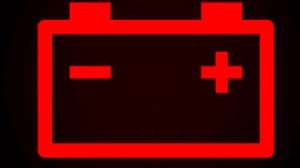
Battery Warning Light Significance
The battery warning light on your Ford S-MAX dashboard is a critical alert that indicates a problem with the charging system. Ignoring it can lead to a dead battery and leave you stranded.
Common Causes of the Warning Light
Faulty Alternator
- Description: A malfunctioning alternator fails to charge the battery properly.
- Impact: Leads to battery drainage and electrical system failures.
Loose or Broken Alternator Belts
- Description: A damaged or loose belt prevents the alternator from generating sufficient power.
- Impact: Reduces charging efficiency.
Wiring or Connection Issues
- Description: Corroded or loose connections disrupt the flow of electricity.
- Impact: Causes intermittent or complete loss of charging capability.
Preventative Measures
Regular Battery Maintenance
- Check Condition: Inspect the battery for damage or corrosion.
- Clean Terminals: Ensure connections are secure and free of buildup.
Alternator Checks
- Functionality: Test the alternator to confirm it is generating sufficient power.
- Professional Inspection: Consult a mechanic if issues persist.
Responding to Battery Alerts
- Investigate the warning light immediately.
- Check the battery’s charge, condition, and connections.
- Seek professional assistance if the cause isn’t apparent.
Importance of Prompt Action
Addressing battery and charging alerts quickly ensures:
- Safety: Avoids the risk of being stranded.
- System Reliability: Keeps your electrical system functioning efficiently.
- Cost Savings: Prevents costly repairs and extended downtime.
Regular maintenance and proactive checks will help you maintain a reliable and efficient charging system in your Ford S-MAX.
Brake System Warning Lights
Understanding the Brake Warning Light
The brake warning light in your Ford S-MAX signals issues that may compromise the safety and functionality of the brake system.
Common Causes
Parking Brake Applied
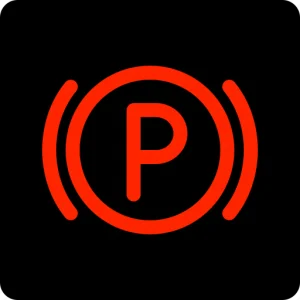
- Description: The light may stay on if the parking brake is engaged.
- Action: Ensure the parking brake is fully released.
Low Brake Fluid Levels
- Description: A common cause of the warning light is insufficient brake fluid.
- Impact: Low fluid levels can accelerate brake pad wear and reduce braking efficiency.
- Action: Check the brake fluid reservoir and top up with the correct type if needed.
Brake Fluid Leaks
- Description: A fluid leak can lead to a loss of pressure and reduced braking performance.
- Action: Inspect the system for leaks and address them immediately.
Importance of Prompt Action
- Safety: Ensures reliable braking performance, reducing the risk of accidents.
- Preventative Maintenance: Avoids additional wear on brake pads and components.
- Cost Savings: Prevents costly repairs resulting from neglected brake system issues.
Maintenance Tips
- Refer to your owner’s manual for specific guidance on brake system checks.
- Regularly inspect brake pads, fluid levels, and other components to maintain optimal performance.
Addressing brake system warning lights promptly ensures your Ford S-MAX remains safe and roadworthy.
Engine Temperature Alerts
Overheating Warning Light
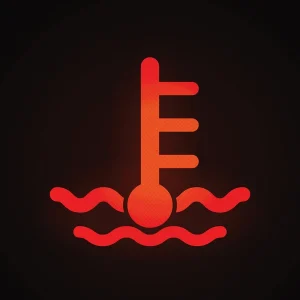
The overheating or temperature warning light in your Ford S-MAX signals that the engine temperature has exceeded a safe operating range. Ignoring this alert can result in severe engine damage.
How the System Works
- Temperature Sensors: Monitor the engine’s heat levels and communicate with the engine control unit (ECU).
- Warning Trigger: The ECU activates the warning light when temperatures rise dangerously high.
Steps to Take if the Warning Light Appears
- Pull Over Safely: Stop driving immediately to prevent further damage.
- Turn Off the Engine: Allow the engine to cool down before inspecting.
- Perform Basic Diagnostics:
- Check Coolant Levels: Ensure the coolant reservoir is filled to the recommended level.
- Inspect for Leaks: Look for visible coolant leaks around the engine or under the vehicle.
- Verify Radiator Fan Functionality: Confirm the radiator fan is operational and not obstructed.
Importance of Prompt Action
- Prevent Engine Damage: Overheating can cause warped engine components or complete failure.
- Ensure Safety: Reduces the risk of breakdowns in hazardous locations.
- Maintain Efficiency: Keeps your vehicle running smoothly and reliably.
Regular maintenance, such as coolant system checks and ensuring proper fan operation, can help prevent engine temperature issues in your Ford S-MAX.
Tyre Pressure and Monitoring
How the Tyre Pressure Monitoring System (TPMS) Works
Every 20–30 miles, your Ford S-MAX’s TPMS checks the tyre pressure and alerts you if it drops below the recommended level.
Tyre Pressure Warning Light
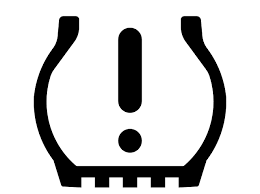
- Indicator: Illuminates on your dashboard when tyre pressure is too low.
- Action Required: Check and adjust your tyre pressure as soon as possible.
Risks of Underinflated Tyres
- Uneven Tyre Wear: Causes premature degradation of the tyre tread.
- Reduced Fuel Efficiency: Increases rolling resistance, leading to higher fuel consumption.
- Increased Risk of Blowouts: Compromises tyre integrity, especially at higher speeds.
Maintenance Tips
- Regular Pressure Checks: Use a reliable tyre pressure gauge to verify levels.
- Inspect Tyre Valves: Look for damage or corrosion that could cause leaks or inaccurate TPMS readings.
- Follow Recommended Levels: Refer to your Ford S-MAX owner’s manual for the correct tyre pressure values.
Importance of Proper Tyre Pressure
Maintaining the correct tyre pressure improves safety, fuel efficiency, and tyre lifespan, ensuring your Ford S-MAX performs at its best.
Additional Warning Lights Guide
Beyond standard safety and performance alerts, additional warning lights in your Ford S-MAX provide critical insights into your vehicle’s health and functionality.
Low Coolant Level Warning Light
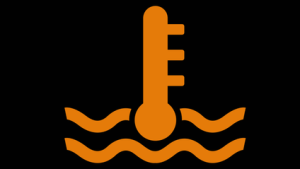
- Meaning: Indicates insufficient coolant levels in the system.
- Action: Check and top up the coolant reservoir to the recommended level. Inspect for potential leaks if the issue persists.
Battery Charging Warning Light
- Meaning: Signals a fault in the battery charging system, such as alternator issues or loose connections.
- Action: Inspect the battery and charging system, or consult a professional mechanic if needed.
Electronic Stability Control (ESC) Warning
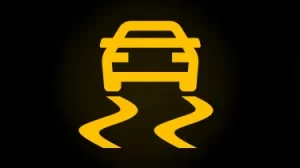
Illuminates when the traction control system detects a malfunction. Vehicle stability may be compromised in slippery conditions – drive cautiously until system is repaired.
Pre-Collision Assist Warning

Indicates fault in the automatic emergency braking system. The system may not detect obstacles or apply brakes in emergencies – maintain safe following distances.
Diesel Particulate Filter (DPF) Warning
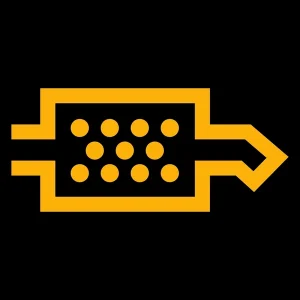
Signals full particulate filter needing regeneration. Drive at sustained highway speeds to clean filter or risk reduced performance and fuel economy.
Reduced Engine Power Warning

Shows ECU has limited performance to protect components. Avoid hard acceleration and have vehicle diagnosed immediately for underlying issues.
Blind Spot System Fault
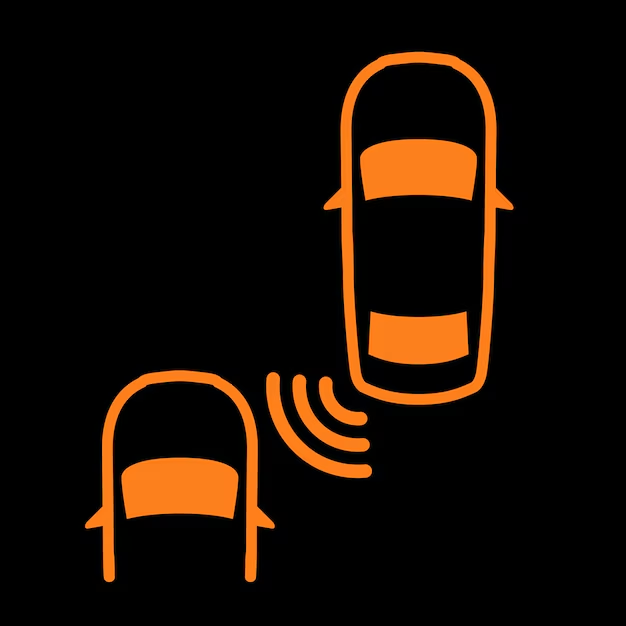
Indicates malfunction in blind spot monitoring. The system won’t detect vehicles in adjacent lanes – manual shoulder checks become essential.
Lane Keeping Aid Warning

Alerts to system failure preventing automatic steering corrections. Stay centered in your lane manually until system is repaired.
Smart Alternator Warning
Indicates variable voltage charging system fault. Battery may not charge optimally – have alternator and belt inspected promptly.
Start-Stop System Fault

Shows automatic engine stop/start malfunction. System will remain inactive to prevent battery drain until repaired.
Brake Pad Wear Sensor Alert

Illuminates when brake pads reach minimum thickness. Schedule immediate replacement to maintain braking performance and prevent rotor damage.
Electronic Parking Brake Warning
Indicates malfunction in automatic parking brake system. Manual release available but parking on inclines should be avoided.
Coolant Level Sensor Warning
Alerts to low coolant reservoir level. Check for leaks and top up with proper coolant mixture to prevent overheating damage.
Radiator Fan Failure Warning
Signals cooling fan malfunction. Engine may overheat in traffic or hot weather – have fan motor or relay replaced immediately.
TPMS Sensor Fault Warning
Indicates wheel sensor malfunction. Manual pressure checks required until system is repaired to maintain proper inflation.
Run-Flat Tyre Indicator
Specific to models with run-flat tyres, shows puncture detected. Limited mobility possible but immediate tyre inspection needed.
Adaptive Headlight Warning

Indicates fault in swiveling headlight system. Standard lighting remains but cornering illumination will be disabled.
Power Liftgate Warning
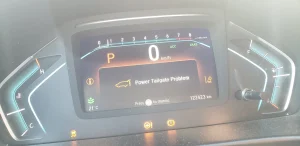
Shows malfunction in automatic tailgate system. Manual operation required until hydraulic or electrical faults are repaired.
Keyless Entry System Fault

Alerts to issues with smart access system. Keyless entry and push-button start may not function – use physical key if needed.
Driver Alert System Warning

Indicates drowsiness detection system fault. Take regular breaks on long journeys as the alert system may not function.
Familiarizing Yourself with Warning Lights
- Consult Your Manual: Refer to your Ford S-MAX owner’s manual for a complete list of warning lights and their meanings.
- Prompt Action: Understanding and addressing these alerts quickly minimizes risks and repair costs.
When looking at Ford, make sure to check out our guides on models like the Ford Ecosport, Ford Explorer, Ford Bronco, and Ford Mustang. Understanding dashboard warning lights is essential. Our expert reviews break down what each light means, highlighting common alerts for these models and what they could signal about underlying issues, so you’re never left guessing behind the wheel.
By recognizing and responding to these additional warning lights, you can maintain your vehicle’s health and ensure a safe driving experience.

